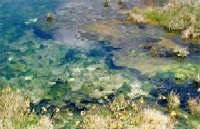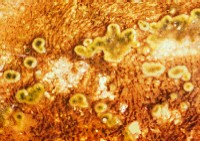- Cyanobacteria are prokaryotic organisms!
- They lack a nucleus and organelles (chloroplast, mitochondria)
- Circular DNA, no chromosomes, no histone protein
- 70S ribosomes – smaller than eukaryotic
- Pigments: Chl.a, phycobilins, carotenoids, (Chl.b)
- Rubisco located in carboxysomes As true Bacteria, cyanobacteria contain peptidoglycan or murein in their cell walls; cell walls are gram-negative
- They lack flagella
- Unicellular, colonies, filaments
- Trichomes are individual cell filaments (sharing cell walls) inside a mucilage sheath
- False branches are outgrowths of filaments adjacent to dead or specialized cells (filaments merely take a „curve“)
- True branches outgrow from cells that change their division axis 90° to the trichome axis
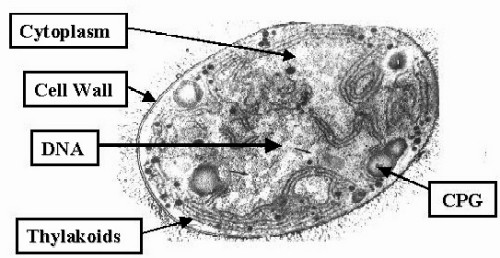
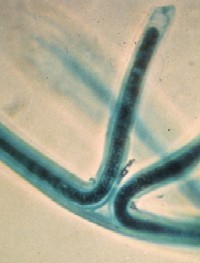
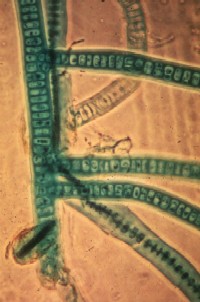
Left: false branching in Scytenoema; right: true branching in Stigonema
- Classical approach: growth form and presence/abscence of morphological features: 5 groups (orders)
- Molecular Systematics: heterocystous and non-heterocystous forms in separate clusters; Prochlorophytes do not form cluster
1. Unicelluar (rods or cocci) - Synechococcus
2. Pleurocapsalean - unicells which produce endospores - Dermocarpa
3. Non-heterocystous filaments - Spirulina, Oscillatoria, Trichodesmium.
4. Heterocystous unbranched filaments - Anabaena, Nostoc
5. Heterocystous branched filaments - Scytonema, Fisherella.
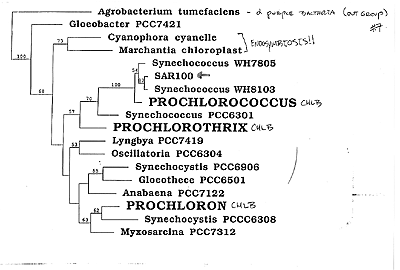
- Asexual reproduction
- Exospores: bud off the end of a filament
- Endospores (baeocytes): subdivision of cell into multiple units
- Akinetes: large, thick-walled cells
- Hormogonium: short filament from breakup of longer trichomes at specialized or dead cells (necridia)
- Sexual reproduction: unknown
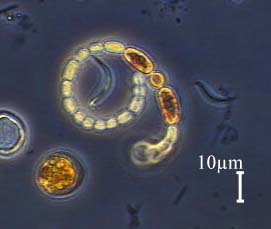
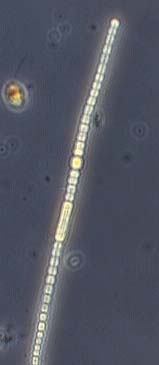
Two Anabaena species with akinetes (long, dark cells) and heterocysts (dark round cells)
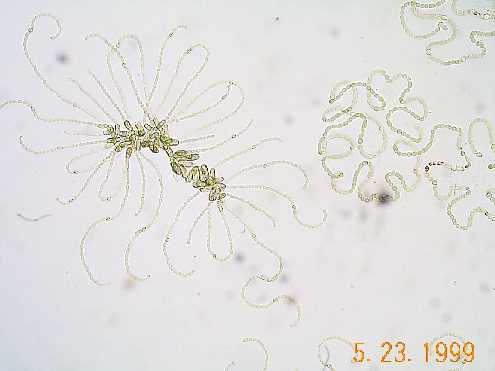
Anabaena sp., young filaments germinating from akinetes
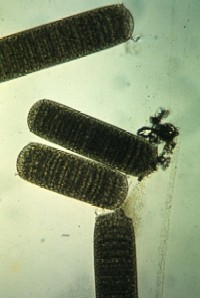
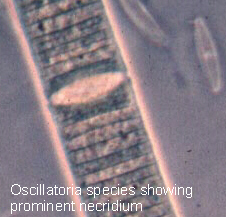
- Cyanobacteria are the oldest photosynthetic organisms. Oldest fossils from Australia date 3.5 billion years ago
- Cyanobacteria changed our atmosphere into oxygen-rich air; they provided the basis for today‘s lifeforms but caused mass mortality in old, anaerobic bacteria forms
- Fossil cyanobacteria appear very similar to today‘s forms and evolution seems to have been very slow in this group
- Stromatolites date back as early as 2.7 billion years ago. Maximum 700-800 million years ago. Only 20 modern habitats
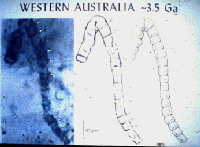
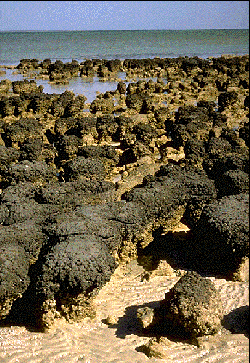
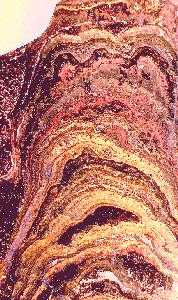
- Pigments: Chl. a, b, carotenoids, phycobilins
- Chl. b restricted to prochlorophytes
- Phycobilins:
- Phycocyanin, phycoerythrin, allophycocyanin, bound to proteins (phycobiliproteins)
- Phycobilins close the „gap“ in the absorption spectra of chlorophyll and carotenoids and act as antenna pigments
- Blue-green CB contain phycocyanin, redish CB contain phycoerythrin
- Phycobiliproteins are located in disk-shaped or hemispherical phycobilisomes on the surface of thylakoids
- Phycoerythrin exhibits yellow autofluorescence
- Carotenoids: b-carotene, xanthophylls (e.g. zeaxanthin)
- Chromatic adaptation: some CB can change their color and pigment composition in response to light quality
- Storage products: cyanophycean starch (does not react with iodine), cyanophycin particles (amino acids), volatin (polyphosphate particles)
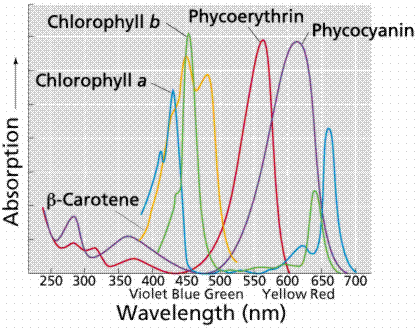
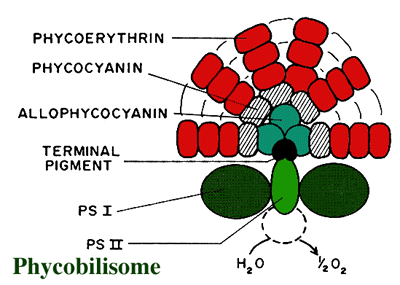
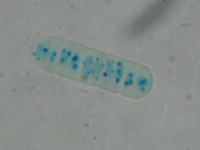
Cyanophycin particles in the cyanobacterium Oscillatoria (dark blue to violet); centroplasm light blue; staining by Loeffler's methylene blue, 1000x bright field
- Cyanobacteria are the only phototrophic organisms that perform N2 fixation
- Nitrogenase converts N2 into NH4+; encoded by nif genes and requires 32 Fe per enzyme molecule
- High energy required: 12-15 ATP per fixed N, H provided by NADPH
- Heterocysts are special cells for N2 fixation: thick cell wall, low oxygen concentration, photosystem II (light reaction) inactive but photosystem I active to provide ATP; connected to vegetative cells by cell wall pores
- Nitrogenase activity: during the day in heterocystous species, at night in non-heterocystous species; induced by low NH4+ concentrations in the environment
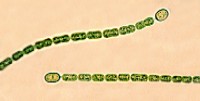

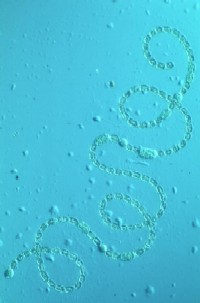
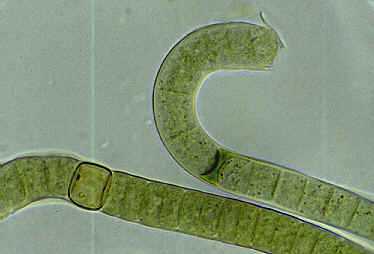
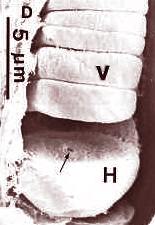
- Anoxygenic photosynthesis: cyanobacteria lacking photosystem II perform photosynthesis without O2 production and use hydrogen sulfide (H2S) as electron donator: 2H2S + CO2 ---> CH2O + 2S + H2O
Thermophilic forms: live in extremely high temperature of up to 70°C (Yellowstone Park)
